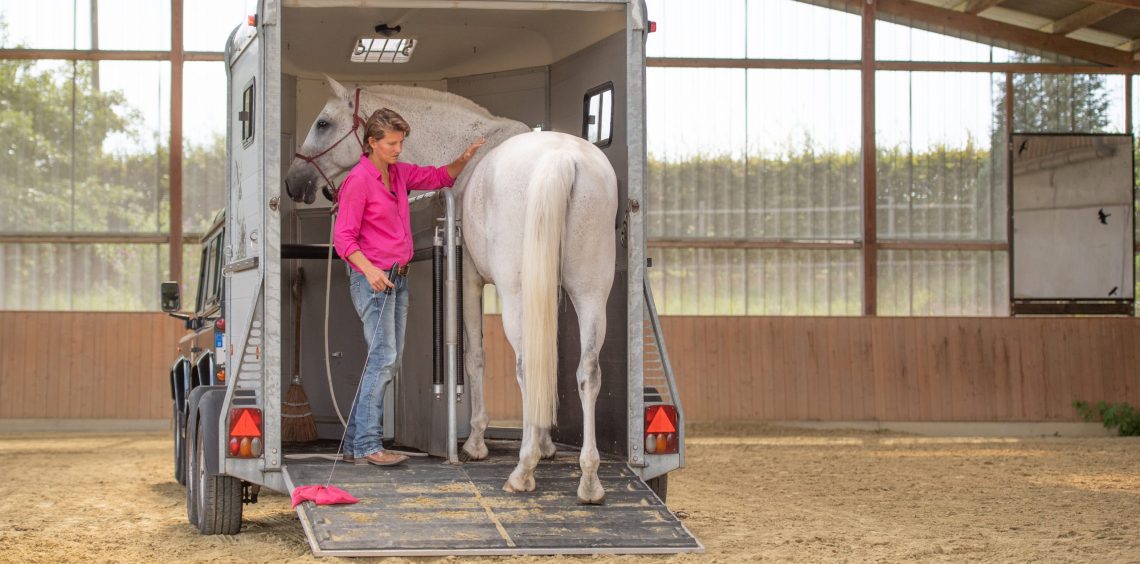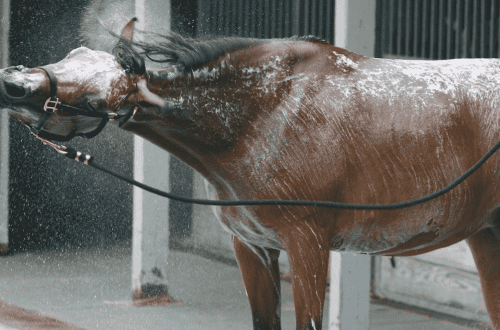
Five ways to load a horse into a horse carrier
Five ways to load a horse into a horse carrier
The sports season begins. The horse and rider are “at the peak of their form” and can expect to win. It remains only to get to the competition … And then the fun begins. The horse does not want to get into the horse carrier for anything and is so nervous on the road that the result of the performance is a foregone conclusion. A horse carrier can be a problem, let’s solve it together!
What is the horse in the horse carrier afraid of?
- Closed space.
- Darkness.
- Unstable ladder.
- An unusual sound with which hooves knock on the ladder.
- Clusters of people.
- Lose balance while driving.
- To be in an unfamiliar place, afraid to go to competitions.
- Get out of the car in the back.
There are several ways to “load” a horse into a car.
Method one: drag
That’s what everyone does. Sometimes the result is positive, the horse is afraid, but there is no way out, it continues to enter the horse carrier and gradually gets used to moving. But often this method does not work, and then both the horse and the person are in danger. Why? A lot of people gather, and the horse is dragged into the horse transport by force: one pulls forward by the lead rope, the others move their legs along the ladder and push the horse from behind. If the horse manages to break free, he will repeat this trick over and over again. And in the end, it can fall, get hurt or injure a person. It is unlikely that then she will learn to calmly treat loading.
It happens that for the first time the horse is well loaded into the horse carrier, but the second time it refuses to go straight in. As soon as she sees the car and people, she starts to shy away, rear up and tries to escape. Later, this can develop into “fear of the crowd” and new problems.
Method Two: The Michael Peace and Leslie Bailey Method
Michael suggests giving the horse a task and giving it time to think about it. If the horse shied away and refuses to load, he simply sends it around on a cord, and when it calms down, it again confronts the task – more precisely, in front of the horse carrier’s gangway.
Michael gives the horse the opportunity to make its own choice – either a horse carrier or running in a circle. Gradually, fears go away, or natural laziness wins. But in the end, the horse makes an independent decision, which means that everything will be in order during the next loadings.
Method three: create favorable conditions
How does the horse perceive the horse carrier? A dark box to enter. First, run a light into the car so that the horse can see where he is going. If you are loading two horses, get the more experienced and calm one first.
Another problem is the drivers. They are different, and horses, like people, can be rocked on the road. If the “helmsman” tends to be reckless, this is unlikely to have a good effect on the horse’s attitude towards transportation.
Method four: the clicker method
There can be many options here. When working with a clicker, the horse is free (then the horse carrier is placed on a fenced field), or on a cord.
The first option is to teach the horse to touch the pointer with his nose. The pointer is placed above the ladder and, as soon as the horse touches the boards with its hoof, they click. Then the pointer is moved up the ladder. The first steps are usually difficult, the horse either runs away from the horse carrier, then returns and tries to approach the pointer on the side of the ladder. But as soon as she learned to put her front legs on the boards, fears suddenly disappear, and the horse calmly enters the horse carrier. Don’t skimp on encouragement here. And then, without wasting time, teach her to slowly back down in a straight line and get out of the car.
The second option is more suitable for those who do not have a free horse carrier at hand. Use the clicker to teach your horse to come up to you and back in a straight line, to stand with his front feet on a “pedestal” – a wooden block. Walk on boards or fabric. To touch with the nose or hoof the “target” – a pointer or a sticker pasted on an impromptu ladder. Train her to back down on uneven ground, such as down a hill. The key is to take your time and reward your horse for every little success. When it’s time to load, all you have to do is give the command and click.
Method five: addiction
In the field where the horse is walking, put a horse carrier (or its dummy). Place the feeder nearby, and then gradually move it inside the machine. The horse will learn to calmly perceive a closed space. This method is rarely used, but in some cases it is indispensable – this is how, in 1992, Przewalski’s wild horses, who lived in special “reserves” in Europe, were loaded and sent to Mongolia to be returned to nature.
In move
So, you’re done with the loading. Now let’s deal with the transportation itself. If the horse is afraid of moving, we will decompose this process into components and accustom the horse to each stage separately. We turn on the engine, wait until the horse relaxes, praise it and take it out of the car. This exercise should be repeated several times – until your four-legged friend stops responding to the noise of the motor.
Now let’s touch. The first trips should last a few minutes and end at your own stable. After training with a horse carrier, please her with a walk through the forest or let her out in the levada. Then the horse will not associate loading and horse transport with a tiring journey and a frightening atmosphere of the competition. Do the same with a horse that has suffered a move injury, although here you will need more time to regain his trust.
Another problem: the horse does not want to get out of the horse carrier in an unfamiliar place. In this case, it is best to leave the horse carrier open in the levada and give her time to get out herself. But this is not always possible. A clicker can be a good help. Anyway, do not rush the horse, let him get used to the light and look around. “If you want to go through all the stages with a horse in 15 minutes, it will take you all day,” says Monty Roberts, the creator of the Join-Up method. “But if you give a horse all day, it will only take 15 minutes.”
Sometimes you have to resort to sedatives. However, do not rely too much on drugs. If you have already decided, give the drug in advance, when the horse is calm. However, as a rule, we venture to the last resort when the horse is already in a state of excitement. The medicine, of course, works that way, but you have to give large doses. By the way, it is difficult for a horse “loaded” with medicines to maintain balance in a moving car. Yes, and then there’s no need to talk about training – most likely, the next time you load, you will have difficulties again.
Sofia Baskina
Photo: Kirill Smyslov
The material is published with the permission of the copyright holder – the magazine “MyHorse” (“My Horse”).





